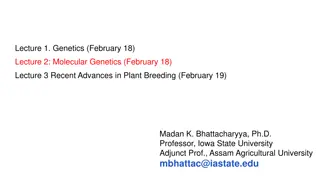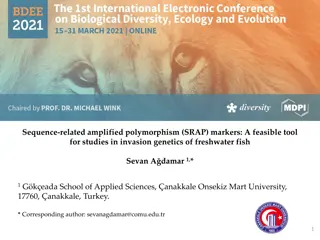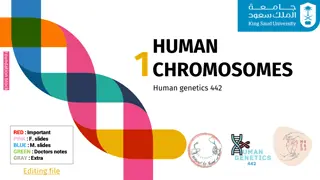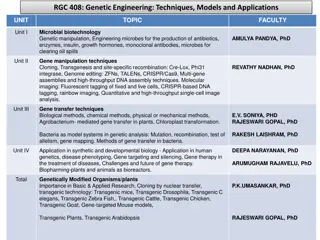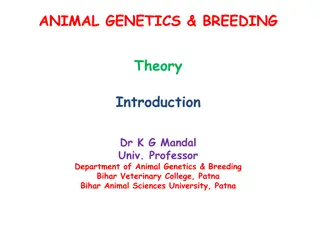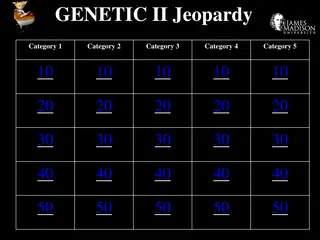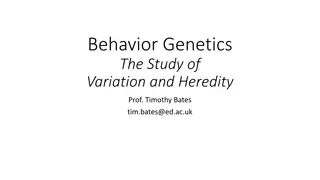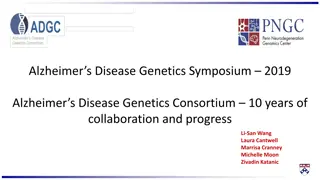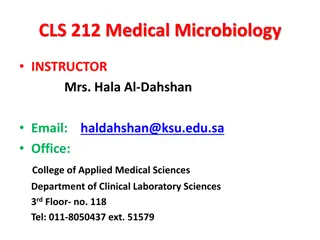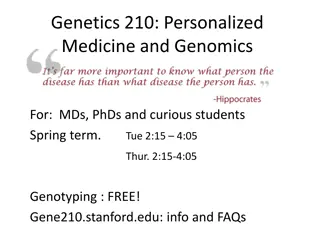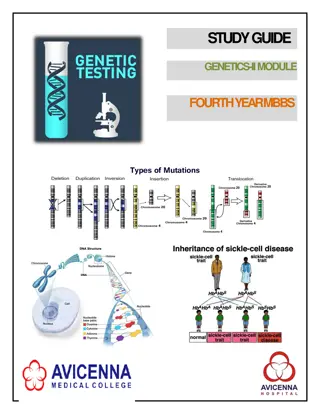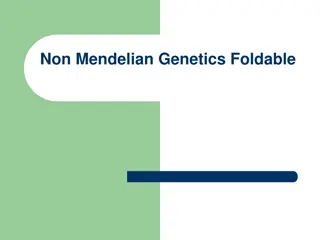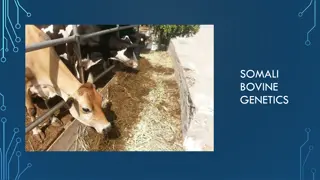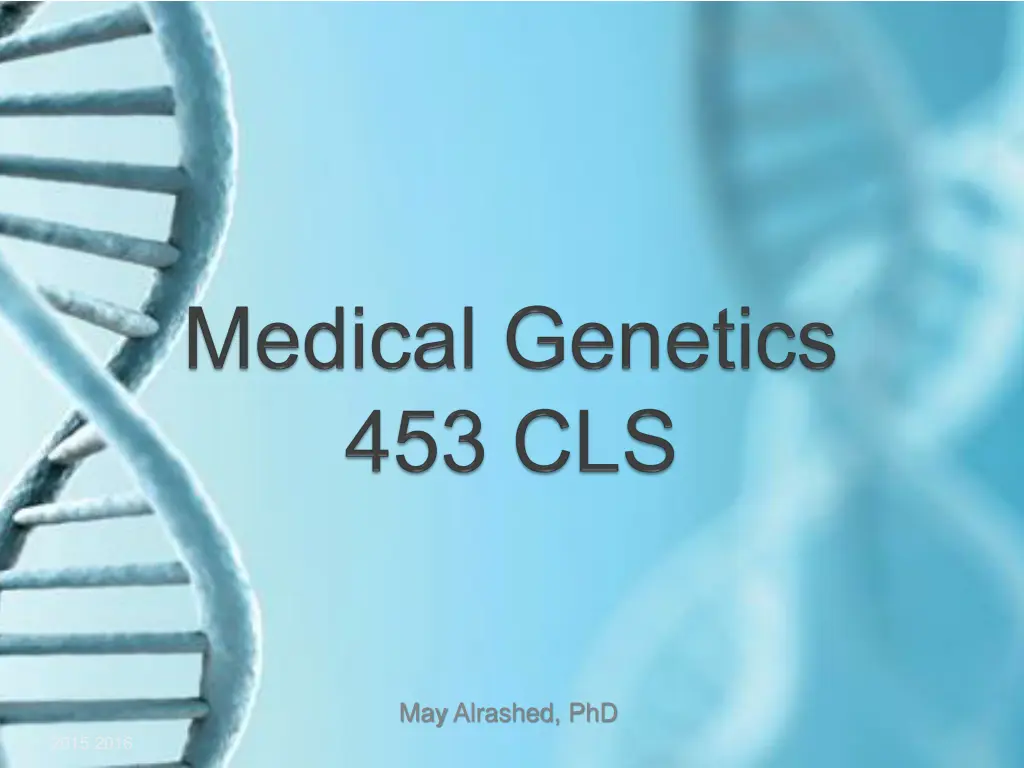
Eukaryotes vs Prokaryotes: Structural Differences Explained by May Alrashed, PhD
Explore the structural variances between eukaryotic and prokaryotic cells as elucidated by May Alrashed, PhD. Learn about the distinct features of eukaryotic and prokaryotic cells, including their nucleus, genetic material, organelles, and cell division methods. Gain insights into the evolutionary timeline and complexities of these fundamental cellular structures.
Download Presentation

Please find below an Image/Link to download the presentation.
The content on the website is provided AS IS for your information and personal use only. It may not be sold, licensed, or shared on other websites without obtaining consent from the author. If you encounter any issues during the download, it is possible that the publisher has removed the file from their server.
You are allowed to download the files provided on this website for personal or commercial use, subject to the condition that they are used lawfully. All files are the property of their respective owners.
The content on the website is provided AS IS for your information and personal use only. It may not be sold, licensed, or shared on other websites without obtaining consent from the author.
E N D
Presentation Transcript
May Alrashed, PhD 2015-2016
2015-2016 May Alrashed, PhD
Eukaryotes vs. Prokaryotes Eukaryotes (animals, plants, fungi, protists). prokaryotes (bacteria) differ greatly in structure. 2015-2016 May Alrashed, PhD
Prokaryotic Cell 2015-2016 May Alrashed, PhD
Eukaryotic Cell Eukaryotes are generally more advanced than prokaryotes 2015-2016 May Alrashed, PhD
Eukaryotic Cell Eukaryotic cells are found in animals, plants, fungi and protists cell; Cell with a true nucleus, where the genetic material is surrounded by a membrane; Eukaryotic genome is more complex than that of prokaryotes and distributed among multiple chromosomes; Eukaryotic DNA is linear; Eukaryotic DNA is complexed with proteins called histones; Numerous membrane-bound organelles; Complex internal structure; Cell division by mitosis. 2015-2016 May Alrashed, PhD
Prokaryotic Cell Unicellular organisms, found in all environments. These include bacteria and archaea; Without a nucleus; no nuclear membrane (genetic material dispersed throughout cytoplasm; No membrane-bound organelles; Cell contains only one circular DNA molecule contained in the cytoplasm; DNA is naked (no histone); Simple internal structure Cell division by simple binary fission. 2015-2016 May Alrashed, PhD
Prokaryotes Eukaryotes nucleus? NO (nucleoid) YES membrane- bound NO YES (Many) 1 - 10 m mm 10 - 50 m mm size 3.5 billion years ago when evolved? 1.5 billion years ago cytoplasm? YES YES cell membrane? YES YES cell wall? Some Do Plants ribosomes? YES YES Circular Free Floating Chromosomes in Nucleus Plants, Animals, Fungi, and Protists DNA? examples Bacteria 2015-2016 May Alrashed, PhD
Structural Organization of Eukaryotic and Prokaryotic Cells 2015-2016 May Alrashed, PhD
Nucleus Control center of cell Double membrane Contains Chromosomes Nucleolus 2015-2016 May Alrashed, PhD
Components of Nucleus 1. Nuclear Envelope pore riddled 2. Nucleoplasm Fluid interior portion 3. Nucleolus Dense cluster of RNA & Proteins ribosomes 4. Chromatin all DNA + Proteins Adapted from http://biology4isc.weebly.com/nucleus.html 2015-2016 May Alrashed, PhD
Nucleolus Spherical body in all eukaryotic cells that disappear during cell division. Associated with specific region in the chromosomes called nucleolar organising region. The size of the nucleolus is associated with synthetic activity of the cell. Functions: a)Synthesis of r-RNA. b)It helps in formation of ribosome subunits. c)Play an important role in cell division. 2015-2016 May Alrashed, PhD
Chromatin & Chromosome Nucleus contains thread like structures- chromatin Chromatin A mass of genetic material composed of DNA and proteins that condense to form chromosomes. Chromosome Is an organized structure of DNA and protein that is found in cells. Chromatid Is the daughter strand of a duplicated chromosome that is joined by a single centromere. 2015-2016 May Alrashed, PhD
2015-2016 May Alrashed, PhD
Chemical composition of Chromosome Eukaryotic chromosomes: two broad components. 1. Nucleic acids: - DNA (primary nucleic acid) + small amt of RNA (transit to the cytoplasm) 2. Proteins: Histones (basic pH) core histones (H2A, H2B, H3 & H4), Linker histone (H1) Non Histone proteins I. II. 2015-2016 May Alrashed, PhD
Histones bind to negatively charged DNA stability to the DNA Mixture of DNA & proteins basic structural unit of chromosomes - chromatin fiber E/M examination of interphase chromatin ellipsoidal beads joined by linker DNA known as Nucleosomes. 2015-2016 May Alrashed, PhD
Nucleosome Simplest packing of DNA strands 146 bp DNA wrapped around histone octamer Octamer = 2 copies of 4 core histones DNA length varies b/w species Core DNA DNA associated with histone octamer Linker DNA DNA b/w histone octamer 8 to 114 bp 2015-2016 May Alrashed, PhD
Model of packing of chromatin and the chromosome scaffold in metaphase chromosome 2015-2016 May Alrashed, PhD



